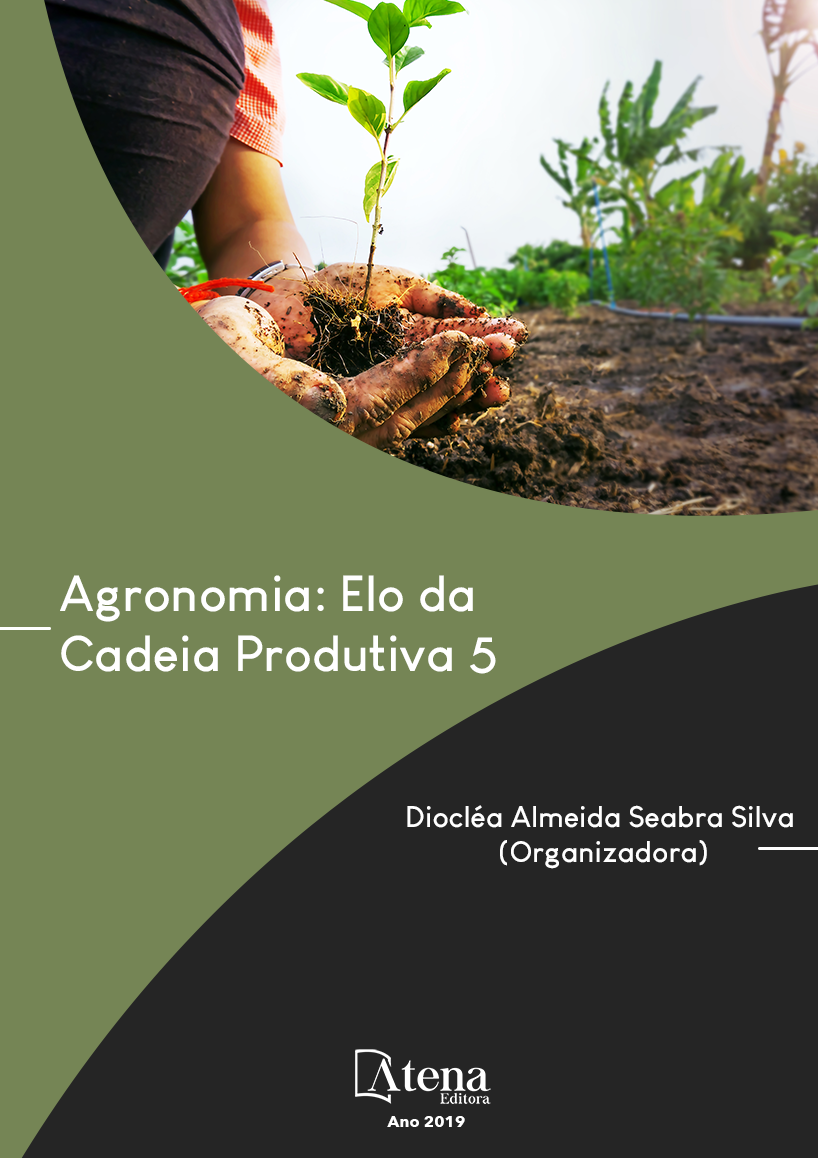
CRESCIMENTO MICELIAL DE COLLETOTRICHUM spp. EM DIFERENTES MEIOS DE CULTURA
O fungo Colletotrichum graminicola
infesta, comercialmente, a cultura do Milho,
causando antracnose das folhas e colmo,
podendo levar a planta à morte. O fungo
sobrevive em restos culturais e sementes.
Assim, objetivou-se avaliar o efeito de diferentes
meios de cultura no crescimento micelial deste
patógeno. O estudo foi realizado na PUCPR
– Toledo, durante o mês de Abril de 2016,
em delineamento experimental inteiramente
casualizado com quatro tratamentos e
quatro repetições. Os meios de cultura foram
preparados previamente à incubação do
patógeno e posteriormente levados a autoclave.
Discos miceliais do patógeno foram extraídos
das folhas do milho e depositados em placas
que continham os diferentes meios de cultura,
então as placas foram vedadas e armazenadas
em temperatura ambiente. Foram realizadas
duas medições do crescimento micelial
com 4 dias após a incubação e com 8 dias
após a incubação. Os dados obtidos foram
submetidos a análise estatística. Dentre todos
os tratamentos o que apresentou o melhor
resultado foi o tratamento Ágar-água-banana,
enquanto que o tratamento Ágar-água teve
menor crescimento dentre todos. Os tratamentos
BDA e Ágar-nutriente obtiveram melhores
resultados quando comparados ao tratamento
Ágar-água devido ao seu maior potencial
nutritivo, e, quando comparado à Ágar-águaBanana, demonstraram um crescimento menor.
Portanto, o tratamento Ágar-água-banana
mostrou-se viável para a produção massal do
fungo.
CRESCIMENTO MICELIAL DE COLLETOTRICHUM spp. EM DIFERENTES MEIOS DE CULTURA
-
DOI: 10.22533/at.ed.24319031220
-
Palavras-chave: Zeamays, Antracnose do milho, substrato.
-
Keywords: Zeamays, Corn anthracnose, substrate.
-
Abstract:
The fungus Colletotrichum graminicola commercially infests the corn
crop, causing anthracnose of leaves and stalk, leading to plant for death. The fungus
survives on crop remains and seeds. The objective in this article was to evaluate the
effect of different means of culture on the mycelial growth of this pathogen. The study
was conducted on PUCPR in Toledo City, Paraná state in April 2016. The experimental
treatment utilized was completely randomized with four treatments and four repetitions.
The means of culture were prepared prior to pathogen incubation and then autoclaved.
Pathogen mycelial discs were extracted from corn leaves and deposited on plates
containing the different means of culture then the plates were sealed and stored at
room temperature. Two mycelial growth measurements were realized, 4 days after
incubation and 8 days after incubation. The data obtained were submitted to statistical
analysis. Among all the treatments that presented the best result was the Agar-waterbanana treatment, while the Agar-water treatment had the lowest growth among all.
BDA and Agar-nutrient treatments had better results when compared to Agar-water
treatment due to their higher nutritional potential, and, when compared to Agar-waterBanana, showed lower growth. Therefore, the Agar-water-banana treatment proved to
be viable for mass production of the fungus
-
Número de páginas: 15
- Marta Sabrina Nimet
- Felipe José Gibbert
- Fabio Mattes Maiorki
- Mayco Antonio Batistella
- Márcia de Holanda Nozaki
- Elisson Felipe Rezende Cano


